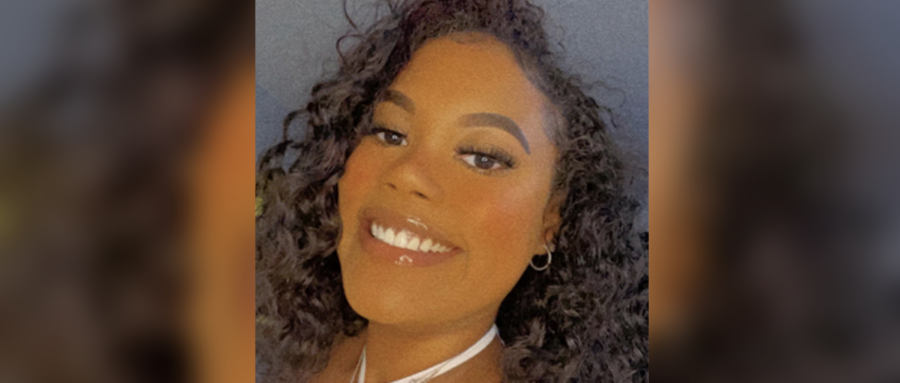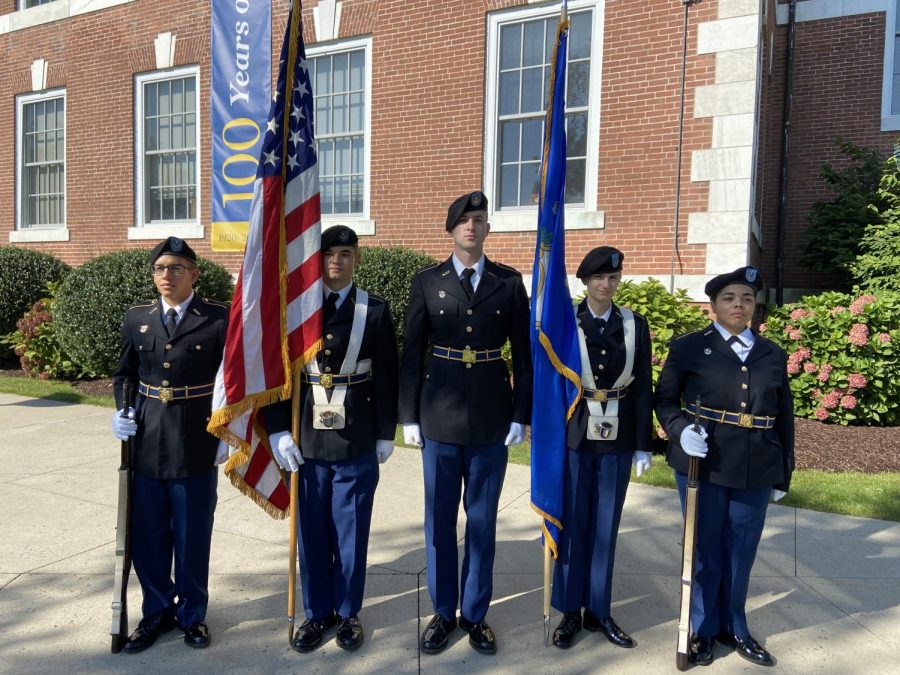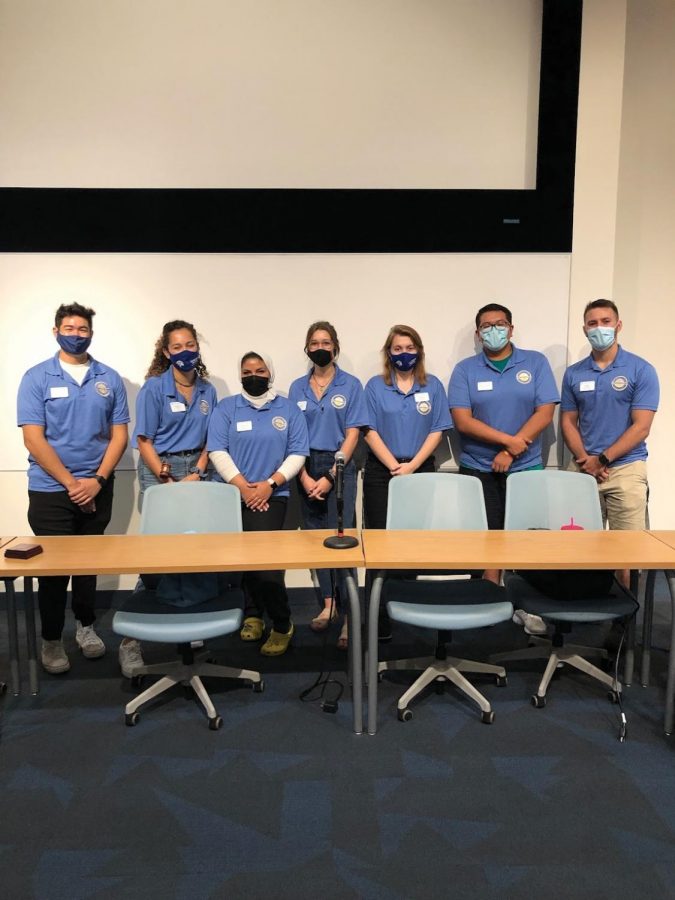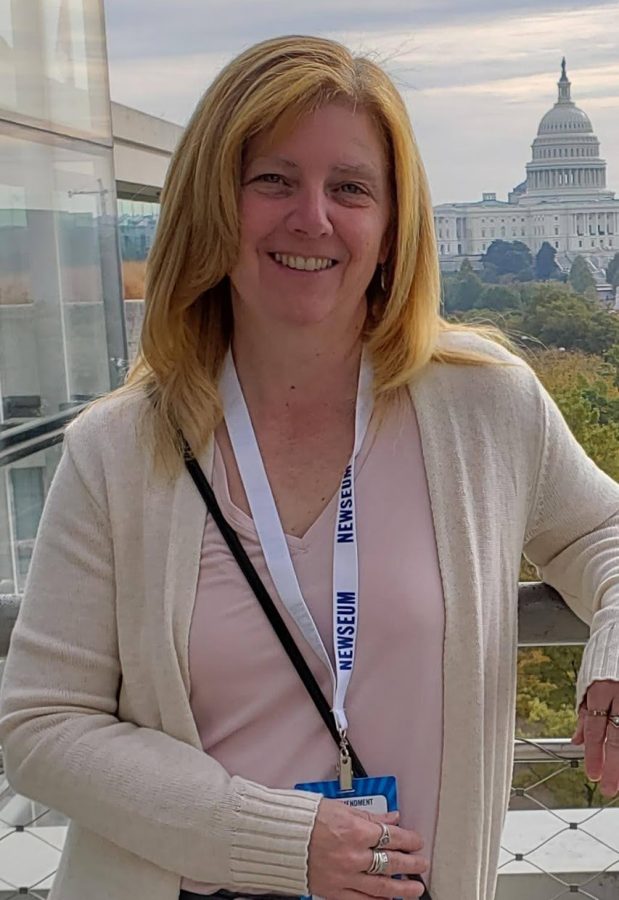While UNH Philosophy Professor David Brubaker was in China this October to speak at two events celebrating Chinese art, he got a first-hand look at the ways in which artists represent the
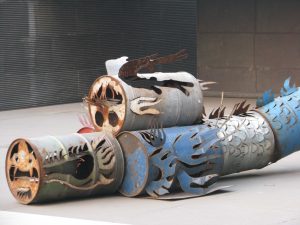
sometimes conflicted culture of that country.
Chinese society is one of the oldest on the planet, but that history has been challenged several times in the last century. The first was by Communist dictator Mao Ze Dong, whose famed cultural revolution actively sought to destroy all old institutions and replace them with newly modernized ones. The Communist regime has significantly moderated since that time, and China has opened up in many ways, including to its own past. In the past two decades, though, increasing globalization and economic growth has presented a new set of challenges.
Brubaker had been to China three times prior to his most recent trip, but said that the explosive growth was immediately apparent in the congestion on city roads. “The traffic is fierce,” he said. “There are many, many more cars.” A driver picked Brubaker up at the airport and took him to a hotel 40 minutes from downtown where he would be staying for the first event, called the Songzhuang Art Festival Academic Forum. Songzhuang is a village on the edge of Beijing that looks in many places like a suburban getaway, with tree-lined roadways and empty fields beside rows of buildings.
The comparison, however, is illusory; Songzhuang is being built up at a phenomenal rate. Along the street outside of the municipal building where the art forum was being held is a line of billboards that the government put up to advertise new construction projects in the neighborhood. These screens stretched for blocks, according to Brubaker. What isn’t advertised is the tearing down of the old village to make room for this newly urbanized landscape. It can be seen, though, in the tightly-packed pristine buildings that encroach on the ramshackle village constructs. “It’s unprecedented – this amount of sustained growth over this amount of time,” said Brubaker. “But there’s still a lot of poverty. People are very aware of it.”
In the art forum, the primary question that everyone focused on was how Chinese artists can successfully join the international contemporary art community. Wang Lin, the academic largely responsible for organizing the forum, published an essay this year that wrestled with what contribution Chinese art could make. It is not an easy problem to deal with. Artists must constantly walk a line between expressing a substantive critical commentary of their culture and offending the Communist Party’s official policies, which frown on dissent. “Artists can’t have style dictated to them,” said Brubaker. “There were a lot of calls at this forum for artists to have the independence that they need to contribute to civil society. That was interesting.”
Brubaker said that that the Chinese government has become much more tolerant of artists since 2000. Now, contemporary art is a growth industry, and that profitability has made the government even more willing to allow artists to push boundaries. “It’s funny. If you ask anyone there what the economic system is, the answer you’re going to get is capitalism!” said Brubaker, laughing. He added that although Chinese artists face noticeably less interference in their work, there are still many areas that aren’t addressed, and artists are constantly trying to see what they can do. Nevertheless, “there is a feeling of excitement,” he said.
Between the two events, Brubaker took time to travel to different museums and galleries in Songzhuang and Beijing. He discovered examples of postmodernism, environmental art, and traditional painting. He went to the 798 complex, a massive set of galleries and shops housed at a former industrial site from the 1950’s. Many of the refurbished buildings resemble aircraft hangars, and some of the machinery that was once used has been retained, integrated into the designs of the galleries.
Brubaker found numerous examples of China’s new outward look in the art displays in and near Beijing. He saw an installation by a Japanese artist that consisted of a dark grey column covered with colored lights in the shape of numbers. The lights blinked off and on at different rates, a little like a futuristic computerized Christmas tree.
He ran across art from Americans, as well as commentaries on American culture from other artists. One set of paintings featured Barbie dolls, one of which was draped in clothing with Coca-Cola logos on it. Another display by a Chinese artist purported to demonstrate the “shape of a soul” in a tube of blown glass. An accompanying video showed the artist using a vacuum to suck the air coming from a crematorium, which was then used for the glassblowing.
On October 30, Brubaker gave his second talk. It focused on literati painting, a form of Chinese art that spans several millennia. The talk was part of a celebration for the thirtieth anniversary of the China National Academy of Painting in Beijing. It began with a ribbon-cutting ceremony to unveil a new exhibition at the academy. The exhibition traced the painting of nature by academy members from the 1930’s to the present.
In some ways, said Brubaker, landscape and literati painting are more modern than contemporary art. “Landscape painting was out of fashion until around 2000,” he said. “Literati painting was not socially conscious.” During the talks, he said, a critic from the magazine Art in America had noted that people in the U.S. could benefit by rediscovering their own traditional art forms.
“What’s conventional now is modernism,” explained Brubaker. “The idea is not necessarily to duplicate the traditional, but to draw from it in order to keep contemporary art vibrant.” Brubaker said it was an honor to be invited and to participate in the ongoing project of helping Chinese artists and curators work through the numerous issues they face as they try to chart a course for their own emergence on the world stage.
“It was heartening to talk with the artists there. They really want to share, to make a contribution to how to think about the world and living with everyone else in it. There are a lot of pressures, and they constantly have to think about what they value.” He said he had some conversations with artists about humanity’s connection to nature. He plans to weave some of what he learned into the ethics courses he teaches at UNH.
“In terms of trying to balance growth and modern life with some equilibrium, it’s front and center in the conversation there,” he said. “That’s something we could all benefit from.”




